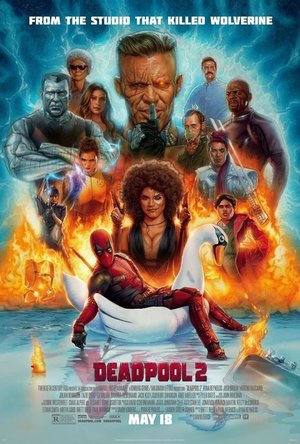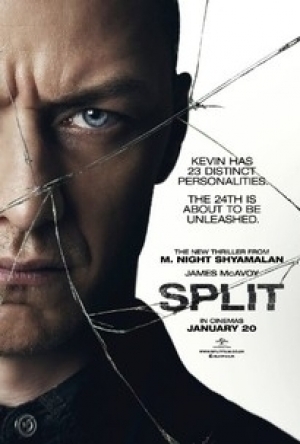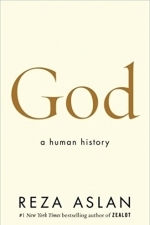
Tactical NAV - GPS Navigation App For Military and First Responders
Navigation and Productivity
App
Created by a U.S. Army soldier while deployed to Afghanistan in support of Operation Enduring...

Chess Pro - with coach
Games
App
▻ ▻ ▻ Special offer: 50% off TODAY !!! (normal price US$19.99/19.99€/£19.99) ▻ Do you...

Detox Diet Pro - Cleanse and Flush the Body
Food & Drink and Health & Fitness
App
Detox diet is a recipe app that provides over 100 recipes to help you lead a healthier life. ...

iCook - Recipes & Cooking with Neven
Food & Drink and Lifestyle
App
* Apple's "iPhone App of the Week" June 2011 * Shortlisted for "App of the Year" Eircom Spider...

Nutrients - Nutrition Facts
Food & Drink and Health & Fitness
App
Nutrients (previously called Foodle) is nutrition at your fingertips! How much sugar is in an apple?...
Bob Mann (459 KP) rated Deadpool 2 (2018) in Movies
Sep 29, 2021
It’s a “family film” (LoL). Ryan Reynolds is back again as the eponymous superhero (aka Wade Wilson) and we start the film with him in a state of romantic bliss with Vanessa (Morena Baccarin). But things quickly go south, and what follows is a convoluted plot involving a local gangster, an Arnie-type character from the future (Josh Brolin) and an potentially dark X-powered child Firefist (Julian Dennison, “Hunt for the Wilderpeople”). Deadpool has to use all his powers to restore order to the planet. Given that his “power” is the ability to rejuvenate himself after surviving the most catastrophic injuries, you can predict that things will get messy!
Yes guys, it’s violent… very, very violent! But it’s done in such a “Tom and Jerry” style that it always comes out as a “Bluuugggghhhhaaaaa!” (* that’s supposed to be the noise of a huge guffaw) rather than an “Ugggh” (retch).
A particular high point for me was the assembly of the ‘X-Men-Lite’ team called “X-force”. The ‘interviews’ for this are hilarious, but the first sortie of the team to intercept a convoy moving prisoners** is even better. It’s just snort-your-Ben-and-Jerry’s-out-of-the-nose funny. This scene also includes precisely 1.8 seconds of a splendid cameo in the part of “Vanisher”!
There are many scenes, supported by numerous snide one-liners, that reference movie classics. A subliminal cameo(s) shot in the X-Men house is just brilliant. Equally brilliant but much more disturbing is a variant on that most famous scene from “Basic Instinct”…. this falls into the “can’t unsee” category of movie clips!
But the film rather over-eggs the comic asides, with a scattergun approach to the comedy that works 70% of the time but not for the other 30%. The best ones are Deadpool’s snide aside to camera. Where the script over-reaches is where the joke gets spread across the cast: one ensemble scene in particular in the flat of blind Al (Leslie Uggams) is: a) delivered so fast as to be practically unintelligible and b) falls as flat as a pancake as a result.
Josh Brolin must have signed a three-film baddie deal, since here he pops up again just weeks after his brilliant Thanos-turn in “Avengers: Infinity War“. And as for that performance, here he is superbly nuanced, with scenes that are truly touching (and with less CGI) .
Across the superhero ensemble, Zazie Beetz stands out as “Domino”. She really should be called “Lucky” though (and yes Andrea ‘Van Helsing’ Ware… I know you have the trademark on that character name! 🙂 ). Domino is my favourite character in the film… just so cool and stylish.
And credit where credit’s due, Ryan Reynolds (“Life“, “The Hitman’s Bodyguard“) is again outstanding as Deadpool. Given he is such a dish (not speaking personally here you understand) he is very brave to portray his character in such an self-deprecating and downbeat way. The final scene in the film (following some brilliant “tidying up the timeline” scenes) is so gloriously self-mocking that I LoLed myself all the way home. Outstanding.
As Marvel films go, it’s another corking comedy. But so close to the knuckle in places, I suspect this is not a character that will feature in the Infinity War sequel!
Bob Mann (459 KP) rated Split (2016) in Movies
Sep 29, 2021
James McAvoy plays Kevin… and Dennis, and Patricia, and Hedwig, and Barry, and Orwell, and Jade, and… if the running time permitted… another 17 characters. But this is no “Kind Hearts and Coronets”: McAvoy plays all these varied personalities in the same body. For Kevin suffers from Multiple Personality Disorder, a rare condition where his different schisms not only affect his speech and attitude but also his whole physique. One personality for example is diabetic and needs insulin: all his others are fine.
Under the care of MPD specialist Dr Karen Fletcher (Betty Buckley, “Carrie”), Kevin seems to be making good progress. But all is not as it seems. Dennis, one of the more evil of Kevin’s personalities, has kidnapped three teens – Claire (Haley Lu Richardson), Marcia (Jessica Sula) and Casey (Anya Taylor-Joy) – and is holding them captive in his home.
It’s all going so well. Kevin (James McAvoy) getting much needed treatment from Dr Fletcher (Betty Buckley).
While Claire and Marcia are good friends, Casey is the wild-card in the pack: a moody and aloof teen that doesn’t fit in with the crowd. We see the abduction unfold largely through her intelligent and analytical eyes, with her experiences causing flashbacks to hunting trips in the woods as a five-year-old child with her father and uncle.
This is McAvoy’s film, with his different personalities being very well observed and the scenes where he switches from one to the other being particularly impressive as piece of acting. Of the youngsters, Anya Taylor-Joy is the most impressive, with the denouement of her particular sub-plot being my favourite part of the film.
Shyamalan, who also wrote the script, is treading a well worn cinematic path here (since often the MPD element is the surprise twist, to list any films here inevitably risks major spoilers – – but there is a decent list here). But this is a film that seems to have generated a lot of interest, particularly with a younger audience (I have seldom been quizzed more with the “Ooh, have you seen this yet” question). As a result this may be a modest sleeper hit.
Girl pray or Girl prey? Casey deep in the psycho’s lair.
Where I think the movie missteps is in its casting of the three cute and scantily dressed teens as the abductees. From the plot of the film that emerges this appears to be unnecessary and exploitative, especially since they are made to progressively dis-robe as the film progresses. The film would actually have been made more interesting if a family unit, or at least a mixed variety of individuals, had been taken.
Marcia (Jessica Sula) doesn’t necessarily appreciate the floral gift.
Unfortunately Shyamalan also over-gilds the lily for the finale by going from medical improbability into outright science fiction: and dilutes what was up to that point a stylish thriller. As a result it’s a decent popcorn film, and worth seeing for McAvoy’s clever performance, but its not going to go down in my book as a classic.
Watch out by the way for a nice final cameo scene: a clever reference to past glories.
Hazel (1853 KP) rated God: A Human History in Books
Nov 5, 2017
Where did religion come from? This is the question Reza Aslan, a scholar of religions, attempts to answer in his latest publication, God: A Human History. To date, Aslan has tackled subjects such as the life of Jesus of Nazareth, and the origins, evolution and future of Islam. In this book, the author journeys back to the earliest evidence of human existence and, using a mix of resources, theories and investigations, tries to determine how our ancestors conceived the idea of gods and souls. Maintaining the idea that the majority of humans think of God as a divine version of ourselves, Aslan also looks at the way our perception of life after death has altered due to the changes in our governments and cultures.
Reza Aslan claims that he, a Muslim-devout-Christian-convert-turned-Sufi, is neither trying to prove or disprove the existence of God or gods. Instead, he is providing readers with a thorough history of religion with a strong suggestion that we, as believers, have fashioned God in our image, and not the other way around.
Insisting that belief systems are inherited from each previous generation, Aslan takes a look at ancient cave drawings where he, and many other theorists, surmise that a form of religion was already well underway. Lack of written word results in a lot of speculation and hypothesis as to what these, usually animal-like, drawings represent, however, many have come to the conclusion that early humans had some form of animistic belief system.
Although not a dig at religion, after all, the author is religious himself, the following chapters bring in to question the authenticity of past and present beliefs. With reference to various psychologists, Aslan poses the theory that ancient humans may have misinterpreted dreams as evidence of a spirit realm. With no one qualified to clarify the things they did not understand, anything without a clear explanation may have been attributed to a god or gods.
As the author describes how religious ideas may have developed from these primitive beliefs to the fully detailed faiths of today, he labels the human race as anthropocentric creatures that have based their religions on human traits and emotions. By reporting in this way, it comes across that the past ideas of the soul, spiritual realms, gods and so forth could not possibly be true, yet, as the final chapters suggest, Aslan is still adamant about the existence of God.
Aslan’s narrative speeds up, finally reaching the recognizable religions of today. Beginning with the Israelites, enslaved by the Egyptians, the author explains, using biblical references, how the first successful monotheistic religion came about. However, researchers have studied the early Bible texts and are inconclusive as to whether the God worshipped by the Jews was the only divine being or whether there were others of a similar standing.
Next, Aslan explores Christianity, posing more questions than he solves, for example, is God one or is God three (i.e. the Holy Trinity)? He defines and compares the definitions of monotheism and pantheism, eventually bringing in Islam and the development of Sufism, which he is not afraid of admitting he agrees with.
God: A Human History is disappointingly short, ending with the feeble conclusion that humans are born with the ability to be convinced of the existence of a divine being and the soul, but it is our own choice to decide whether or not to believe in them. The remaining third of the book is an abundance of notes on the texts, bibliographical references, and Reza Aslan’s personal opinions about the ideas and theories mentioned in his history of religion.
Although an extensive history on the origins of religion, God: A Human History leaves readers none the wiser as to whether their belief is founded in truth or whether it is something that has evolved over time due to lack of understanding about the world. Granted, it was not the aim of the book to prove or disprove the existence of God, however, it may unintentionally sow seeds of doubt or, potentially, anger devout believers. However, there is no attempt at persuading readers to believe one thing or another, thus making it suitable for people of all religion and none.
Haley Mathiot (9 KP) rated Ada: Legend of a Healer in Books
Apr 27, 2018
There's just one problem: There's a man who wants to find her and use her as his personal fountain of youth.
Reviewing self-published books is a tricky business. There's a wide range of them: the really crappy ones that make the editor inside me want to cry, the mediocre ones that are just missing a story, and then the occasional gem that I'm so glad I managed to get my hands on. I've had one or two other gems: Ada makes the list, and is pretty high up on it.
I loved Ada's story. I read it almost completely in one sitting. I liked Ada, and admired her will power and strength. We didn't see eye to eye on everything, and I thought she was immature and disrespectful at times, but I could still relate to her well enough that I couldn't hate her for it. About halfway through the book, some characters were introduced that I didn't expect to stay in the story, simply because of the way they were brought in. But isn't that the way our lives work? We meet someone and aren't sure if we'll ever really see them again, but they end up as our friends, and sometimes it's someone really special? That was Ada and Daniel. Daniel is going to have to be added to my list of literary crushes. Not only is he good looking, he's a "bad boy" and a sweetheart at the same time. And he's got a delicious smile. And he does Parkour. And he's French.
The writing was clear and descriptive and easy to understand. It wasn't perfect and there were a few irritating sections with poor grammar, but it didn't distract from the overall piece enough to bring down the star rating.
One of the things I really liked was the pacing. Sometimes a book has an interesting plot, but it takes way too long for things to actually happen that you fall asleep, or have to read an entire series just to get the same amount of plot you're looking for in a single novel (coughtwilightcough). The pacing was really fast in Ada, almost to the point where I wished it was just a little slower so I could really concentrate on what Ada was thinking and feeling.
There was one very tiny part that I didn't like. At one point, Ada tries to practice healing herself, so she takes a pair of scissors to her arm. I thought this was completely inappropriate and very risky, because through Ada's interior monologue, it almost seemed to show self-cutting in a good light. Yes she was practicing healing herself and learning to ignore pain, and trying to figure out her power, and Ada thought it through well enough that the reader would understand why she was doing it, but it just seemed bold and risky. Because of that, I wouldn't want young young adults to read it—I feel like it would make them uncomfortable. I also can't help but wonder what kind of influence that will have on young readers.
Scattered through the book were some truly beautiful illustrations. I found myself flipping through them and just staring at them. They have a pen-and-ink with watercolor sort of feel to them: very lose and impressionistic, almost dreamlike, but with wild pen and scratches thrown through to add definition. Here are two of my favorites (very poor quality photos, though, so I apologize ahead of time).
All in all, I was very pleased and excited about Ada: Legend of a Healer, and I can't wait for the next book in the series.
Content/Recommendation: Some swearing, small reference to self-abuse. Ages 16+




